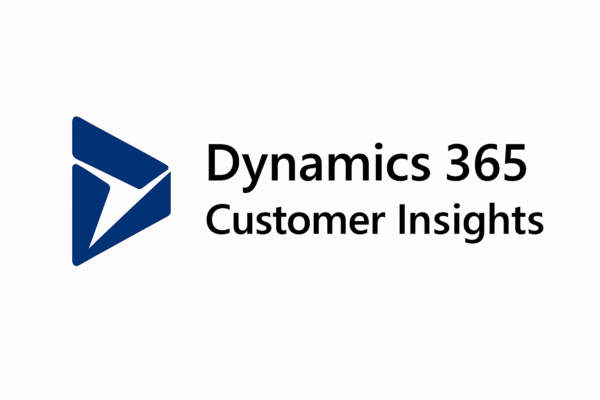Transforming HR & Payroll with Microsoft Business Applications
Human Resources (HR) and Payroll are at the heart of every organization’s operations. Managing employee information, attendance, leave, compliance, and salary disbursement is complex—especially for enterprises with multiple locations and diverse workforces.
Microsoft Business Applications, including Dynamics 365 and the Power Platform, are redefining how companies handle HR and payroll processes. By moving from fragmented, manual systems to unified, intelligent platforms, organizations can ensure efficiency, accuracy, and compliance—all while enhancing the employee experience.
Comparison Table
| Feature / Process | Traditional HR & Payroll | With Microsoft Business Applications |
|---|---|---|
| Employee Data Management | Data scattered across spreadsheets, local systems, and files | Centralized, secure database with role-based access |
| Recruitment & Onboarding | Manual job postings, paper resumes, slow onboarding | Automated candidate tracking, integrated interview scheduling, digital onboarding checklists |
| Payroll Processing | Time-consuming calculations, risk of errors, limited compliance checks | Automated calculations, multi-currency and tax compliance, seamless integration with finance |
| Attendance & Leave | Manual attendance logs, inconsistent leave tracking | Real-time attendance via devices/apps, automated leave accrual, self-service requests |
| Compliance Management | Manual tracking of labor laws and regulations | Built-in compliance tools, automated statutory reports, audit trails |
| HR Analytics | Limited reporting, no predictive insights | Interactive dashboards, workforce trend analysis, predictive analytics with Power BI |
| Employee Self-Service | Dependence on HR for payslips, leave updates, and record changes | Employee portals for updating records, downloading payslips, applying for leave |
| Integration with Other Functions | HR data siloed from finance, projects, and L&D | Full integration with finance, project management, and learning systems |
| Scalability | Difficult to adapt to organizational growth | Cloud-based, scalable to multiple locations and large workforces |
| Decision-Making | Reactive, based on outdated reports | Proactive, based on real-time and predictive data |
1. Unified Employee Data Management
In many companies, employee data is scattered across spreadsheets, legacy systems, and different departments. With Microsoft Business Applications:
-
All employee records—from recruitment to retirement—are stored in a single, secure database.
-
HR teams can quickly access personal details, job history, performance data, and compliance documents.
-
Integration with Azure Active Directory ensures secure user authentication and role-based access.
2. Streamlined Recruitment and Onboarding
Recruitment often involves multiple touchpoints—job postings, candidate screening, interviews, and onboarding. Dynamics 365 Human Resources offers:
-
Automated candidate tracking and evaluation workflows
-
Integration with Microsoft Teams for interview scheduling and collaboration
-
Digital onboarding checklists to help new hires settle in faster
3. Accurate Payroll Processing
Payroll mistakes can erode employee trust and lead to compliance penalties. Microsoft Business Applications help by:
-
Automating salary calculations based on attendance, overtime, and deductions
-
Supporting multiple pay cycles, currencies, and tax rules for global operations
-
Generating statutory reports for local compliance requirements
-
Integrating with accounting modules for seamless financial reconciliation
4. Attendance and Leave Management
Dynamics 365 integrates with time-tracking devices and mobile apps to capture attendance in real time.
-
Employees can request leave via self-service portals or mobile apps
-
Managers receive instant notifications for approvals
-
Automated accrual calculations ensure leave balances are always accurate
5. Compliance and Security
HR and payroll data is highly sensitive. Microsoft Business Applications offer:
-
Role-based access control to protect confidential data
-
Audit trails for all changes in employee records
-
Built-in compliance tools for GDPR, local labor laws, and tax regulations
6. Analytics for Strategic HR Decisions
Using Power BI, HR leaders can gain deep insights into:
-
Employee turnover trends
-
Payroll cost distribution
-
Recruitment effectiveness
-
Workforce productivity metrics
With predictive analytics, HR can forecast staffing needs and budget impacts.
7. Employee Self-Service Portals
Empowering employees reduces HR workload. With Microsoft Business Applications:
-
Employees can update personal information, download payslips, and track leave balances
-
Mobile access ensures employees can manage HR tasks anytime, anywhere
8. Seamless Integration with Other Business Functions
One of the biggest advantages of Microsoft Business Applications is integration:
-
Payroll data syncs with finance for budgeting and reporting
-
HR metrics feed into project management for resource allocation
-
Learning and development modules integrate with performance reviews
Conclusion
By transforming HR and payroll with Microsoft Business Applications, companies can replace manual, error-prone processes with automated, integrated workflows. The result is a more efficient HR department, a more satisfied workforce, and better compliance with regulatory requirements.
From recruitment to retirement, Microsoft’s ecosystem enables HR teams to operate strategically—aligning talent management with organizational goals.




